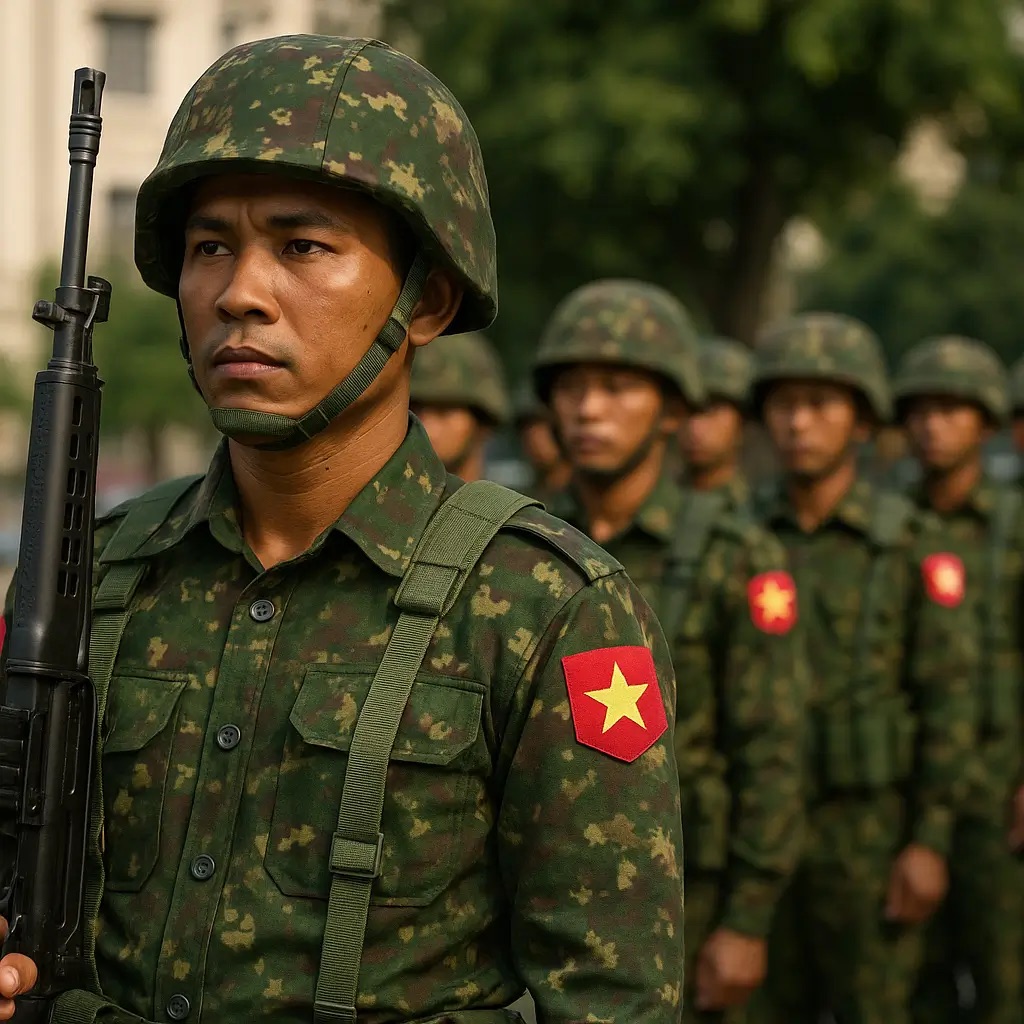Introduction: The State of Myanmar’s Military in 2025
As of 2025, the Myanmar military—known locally as the Tatmadaw—remains one of the most powerful yet controversial forces in Southeast Asia. Following the 2021 coup, the armed forces have solidified their grip on the nation, igniting widespread civil conflict and global condemnation. The military’s dominance has shaped not only the country’s political direction but also its social, economic, and humanitarian landscape.
The Coup and Its Consequences
Background of the 2021 Takeover
In February 2021, the Myanmar military seized power after disputing the results of the general election, in which Aung San Suu Kyi’s National League for Democracy (NLD) won a majority. Claiming electoral fraud, the Tatmadaw detained Suu Kyi and other political leaders, replacing civilian rule with military governance.
Aftermath: Protests and Brutal Crackdown
The coup triggered mass protests, strikes, and civil disobedience across the nation. The military responded with violence, arresting thousands and killing over 3,000 civilians. This marked the beginning of an internal armed conflict that, by 2025, has evolved into a full-scale civil war in parts of the country.
Military Structure and Leadership in 2025
The Chain of Command
Senior General Min Aung Hlaing continues to lead the military in 2025, acting as both the head of state and commander-in-chief. The hierarchy below him remains tightly controlled, with loyalty to the senior leadership prioritized over professional reforms.
Force Composition and Capabilities
Myanmar’s military includes:
- Around 300,000 active personnel
- A well-equipped air force and navy
- Access to Chinese and Russian military technology
- Intelligence units used for internal surveillance and crackdown on dissent
Despite sanctions, the Tatmadaw has maintained its operational capability through regional alliances and illicit arms channels.
Civil War and Armed Resistance
Rise of the People’s Defense Forces (PDF)
In response to military oppression, thousands of young civilians and activists joined newly formed resistance groups under the name People’s Defense Forces (PDF). These groups are coordinated by the National Unity Government (NUG), a shadow government formed by ousted lawmakers and ethnic representatives.
Ethnic Armed Organizations (EAOs)
Ethnic militias, including the Kachin Independence Army (KIA), Karen National Liberation Army (KNLA), and Arakan Army (AA), have intensified their operations against the junta. In 2025, these groups control substantial territory in border regions, creating parallel zones of governance outside the military’s control.
Military Tactics and Human Rights Accusations
Counterinsurgency Operations
The Tatmadaw has resorted to airstrikes, village burnings, mass arrests, and internet shutdowns to suppress dissent. Entire communities have been displaced, and humanitarian access has been severely restricted.
Accusations of War Crimes
The United Nations, Amnesty International, and Human Rights Watch have documented allegations of:
- Mass killings of civilians
- Arbitrary detention and torture
- Targeting of hospitals, schools, and religious sites
- Forced conscription of children and use of sexual violence
In 2023, the International Criminal Court initiated preliminary investigations into crimes against humanity committed by the Myanmar military.
Economy Under Military Rule
Collapse of Investment and Sanctions
The international response to the 2021 coup and subsequent military actions led to a wave of economic sanctions. Western countries have frozen assets, banned arms exports, and halted diplomatic ties. Foreign investors have withdrawn, particularly from the energy and garment sectors.
Widespread Poverty and Inflation
By 2025:
- The Myanmar kyat has significantly devalued
- Inflation exceeds 35%, affecting food and fuel prices
- Over 50% of the population lives below the poverty line
- Public services, including healthcare and education, are in severe decline
International Reactions and Geopolitical Dynamics
China, Russia, and Regional Support
Despite isolation from the West, Myanmar’s military maintains ties with China, Russia, and some ASEAN neighbors. China continues infrastructure investments through the China-Myanmar Economic Corridor. Russia has supplied military equipment and training.
Limited ASEAN Influence
ASEAN has struggled to mediate peace. Its “Five-Point Consensus” plan—agreed in 2021—has largely failed to achieve results due to the military’s unwillingness to cooperate.
Future Outlook: Can the Military Hold On?
Erosion of Control
Though the Tatmadaw controls major cities and infrastructure, it faces increasing resistance in rural and border regions. The loss of legitimacy among citizens, combined with ongoing sanctions and battlefield losses, has weakened its long-term hold on power.
Youth and Digital Resistance
A younger, digitally connected generation continues to push for freedom, despite threats and imprisonment. Citizen journalists and activists are using encrypted apps, online platforms, and global networks to document and resist the regime.
Conclusion: The Battle for Myanmar’s Soul
As 2025 unfolds, Myanmar stands divided—military might on one side, a people’s movement for democracy on the other. The Tatmadaw may still hold weapons and territory, but the spirit of the people, the rise of civil resistance, and international pressure continue to challenge its future. The question is not whether change will come—but how long the nation will bleed before it does.

